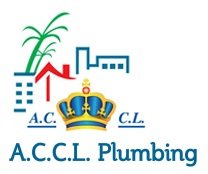The integration of voice-controlled technology into plumbing systems is revolutionizing the way we interact with our home’s water management. Voice-controlled plumbing interfaces offer a convenient, hands-free, and efficient way to manage water usage, temperature, and maintenance. In this article, we will explore the benefits and features of voice-controlled plumbing interfaces.
What are Voice-Controlled Plumbing Interfaces?
Voice-controlled plumbing interfaces are smart home devices that allow users to control and monitor their plumbing systems using voice commands. These interfaces can be integrated with popular voice assistants, such as Amazon Alexa or Google Assistant, to provide a seamless and intuitive user experience.
Benefits of Voice-Controlled Plumbing Interfaces
– Convenience: Voice-controlled plumbing interfaces provide a hands-free way to control water temperature, flow rate, and other plumbing settings.
– Water Conservation: These interfaces can help users monitor and reduce their water usage, leading to cost savings and environmental benefits.
– Improved Maintenance: Voice-controlled plumbing interfaces can detect leaks and other issues, alerting users to potential problems before they become major issues.
– Enhanced Safety: These interfaces can also provide alerts in case of abnormal water usage or temperature fluctuations, ensuring user safety.
Features of Voice-Controlled Plumbing Interfaces
– Voice Command Control: Users can control water temperature, flow rate, and other plumbing settings using voice commands.
– Water Monitoring: These interfaces can monitor water usage and provide real-time data on consumption.
– Leak Detection: Voice-controlled plumbing interfaces can detect leaks and alert users to potential issues.
– Smart Home Integration: These interfaces can be integrated with other smart home devices, such as thermostats and lighting systems.
Applications of Voice-Controlled Plumbing Interfaces
– Residential Homes: Voice-controlled plumbing interfaces can be used in residential homes to provide a convenient and efficient way to manage water usage and temperature.
– Commercial Buildings: These interfaces can also be used in commercial buildings, such as offices, hotels, and restaurants, to improve water management and reduce costs.
Conclusion
Voice-controlled plumbing interfaces offer a range of benefits, including convenience, water conservation, and improved maintenance. As smart home technology continues to evolve, voice-controlled plumbing interfaces are likely to become an essential feature in modern homes and buildings. By integrating voice-controlled technology into plumbing systems, users can enjoy a more efficient, convenient, and sustainable water management experience.

